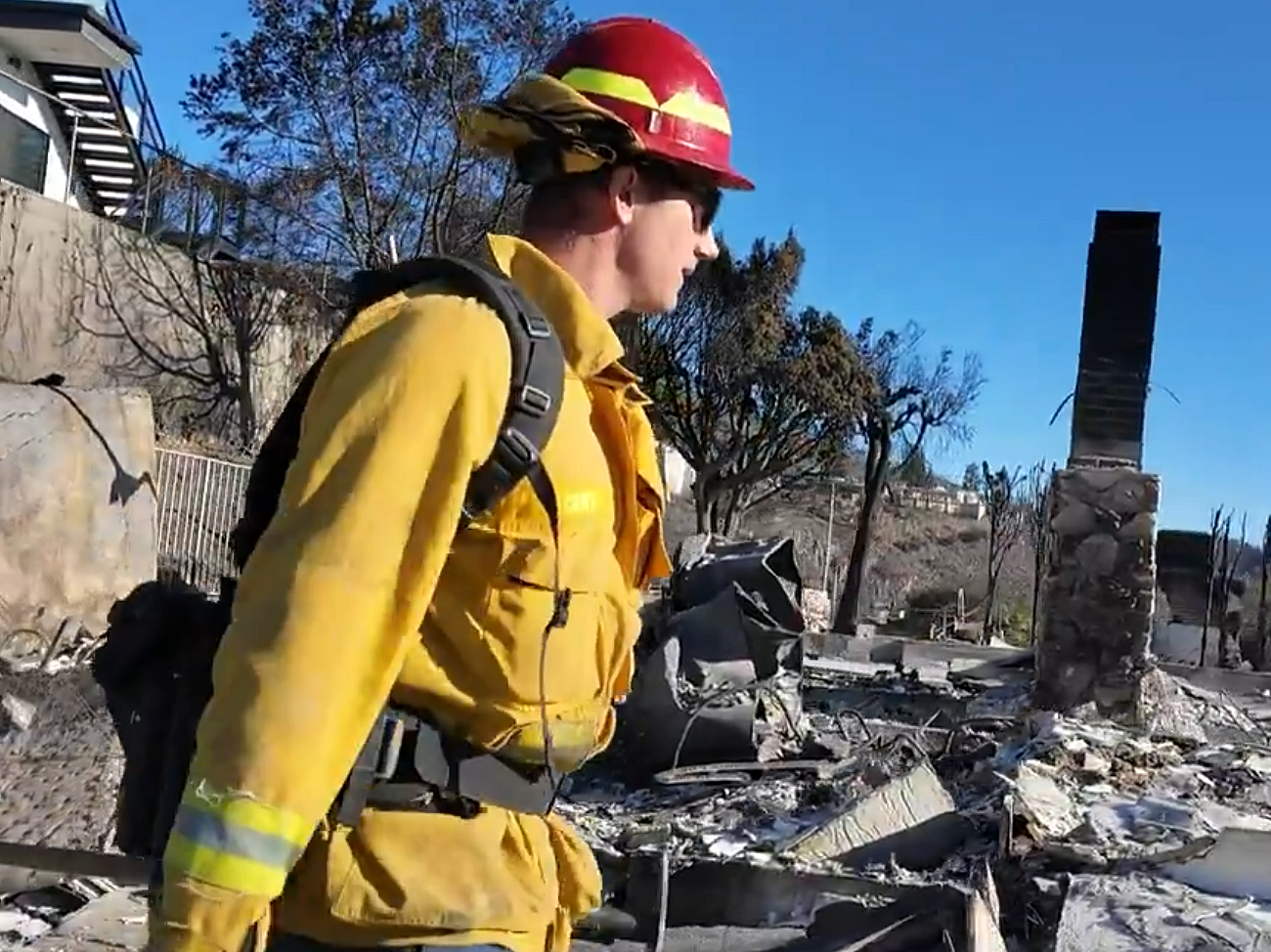
Climate change made Los Angeles wildfire disaster more likely – Study

By the Climate Centre
Climate change worsened the Los Angeles wildfires by reducing rainfall, drying out vegetation, and increasing the overlap between seasonal drought and strong Santa Ana winds, a new study by World Weather Attribution out today has found.
The report found the hot, dry weather that drove the infernos was about a third more likely in the current climate and would be a further third more likely if global warming goes well above 2.0°C by 2100, as forecast now.
“Water infrastructure, not designed to fight a rapidly expanding wildfire, was unable to keep up with scale and extreme needs during the Eaton and Palisades wildfires,” a WWA press release adds.
Theo Keeping, a specialist wildfire researcher at London’s Imperial College, said today that “[w]ith every fraction of a degree of warming, the chance of extremely dry, easier-to-burn conditions around the city of LA gets higher and higher.
“Very wet years with lush vegetation growth are increasingly likely to be followed by drought, so dry fuel for wildfires can become more abundant as the climate warms.”
Such “whiplash weather”, as it’s called, between very wet and dry conditions, is increasing around the world, probably because of climate change, a recent study found.
Severe floods in East Africa in late 2023 that followed three years of devastating drought there is one example; both events were intensified by climate change, WWA studies found.
Previous analyses have shown California rains may now be expected later than the familiar October–April season, so strong Santa Anas might occur in an unusually dry December and January when they typically peak, leading to serious wildfires; this is essentially what happened this year.
‘With every fraction of a degree of warming,
the chance of extremely dry, easier-to-burn conditions around LA gets higher’
Roop Singh, Head of Urban and Attribution at the Climate Centre, adds: “A deadly combination of factors came together to turn this wildfire into a disaster. Climate change set the stage, helping turn the hills around LA tinder-dry.
“But hurricane-force Santa Ana winds, the rapid spread of fires into urban zones, and a strained water system all made the blazes extremely difficult to contain.
“These fires have highlighted just how vulnerable California is to winter wildfires, underscoring the need for better preparation for a more dangerous future.”
Quoting a report from Los Angeles in the New York Times, the WWA team also emphasize “the importance of early warning and evacuation systems, as 17 of the [total] 28 deaths occurred in West Altadena, a neighbourhood where warnings were delayed compared to other affected areas.”
The study was conducted by 32 researchers and scientists from universities and meteorological agencies in the US as well as Brazil, France, the Netherlands, Portugal, Sweden, and the UK.
Media reports today said the first significant downpours of the season starting Saturday have doused remaining wildfires, but so far without causing feared major debris flows from burned areas.
The danger remains, however, and the California Natural Resources Agency said on X/Twitter that in Los Angeles it was “all hands on deck to prepare for rain and potential burn scar flooding in the LA area”.
The Red Cross Los Angeles region renewed its landslide safety advice yesterday, warning the public never to drive across a road with mud or water flowing across it.
“The two massive fires that destroyed more than 17,000 structures in California are almost out, but for those impacted, recovery is just beginning,” the American Red Cross said yesterday; the National Society was working around the clock to support them, “and alongside our partners, we’ll continue to be there for weeks and months to come.”
The Red Cross statement added: “As the climate crisis worsens, disasters like wildfires and hurricanes are becoming more frequent and intense. This means the Red Cross is now launching twice as many relief operations for major disasters than a decade ago.”
Hundreds of Red Crossers continue to provide support in California, including some 450 people still in emergency shelters, and with partners more than 115,000 meals and snacks and tens of thousands of non-food relief items such as cleaning supplies, flashlights, face masks, gloves and water.
Emergency workers late last week check destruction in Palisades ahead of residents returning to the area. (Video grab: California Governor’s Office of Emergency Services)